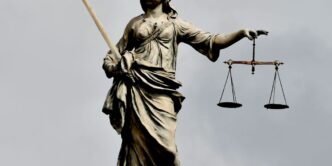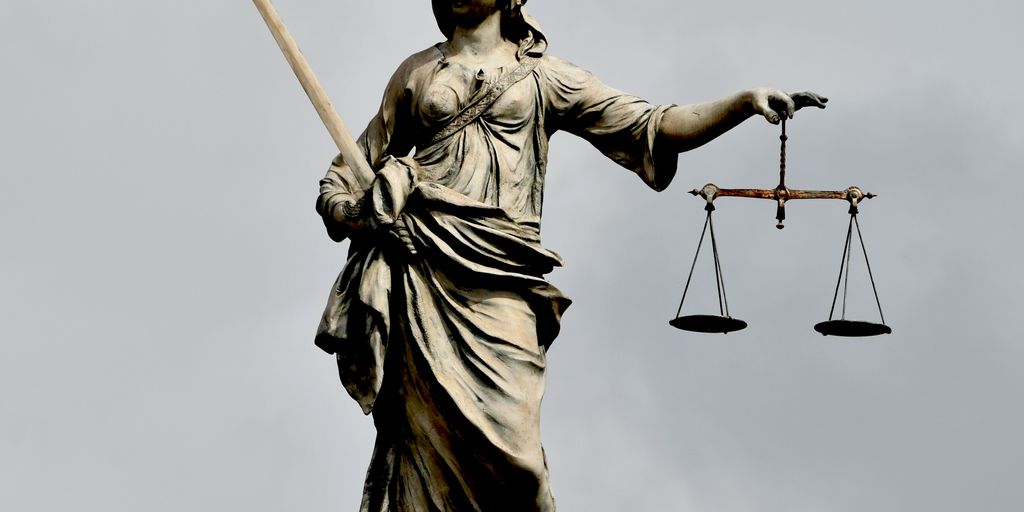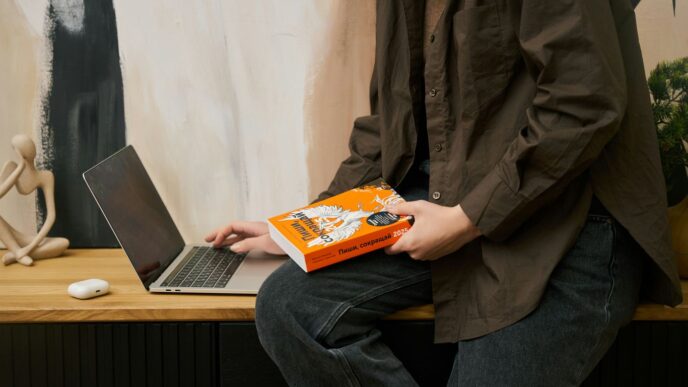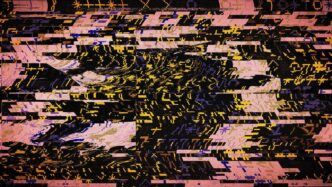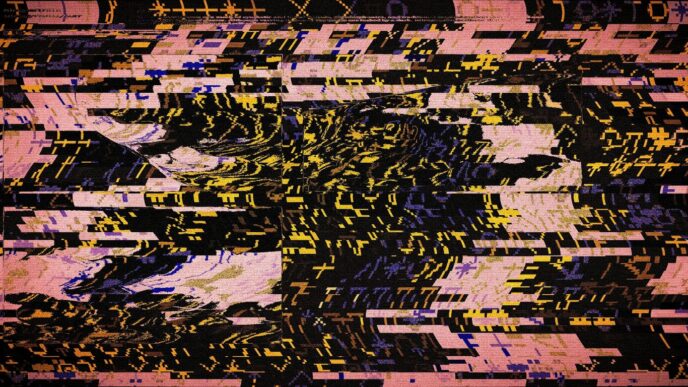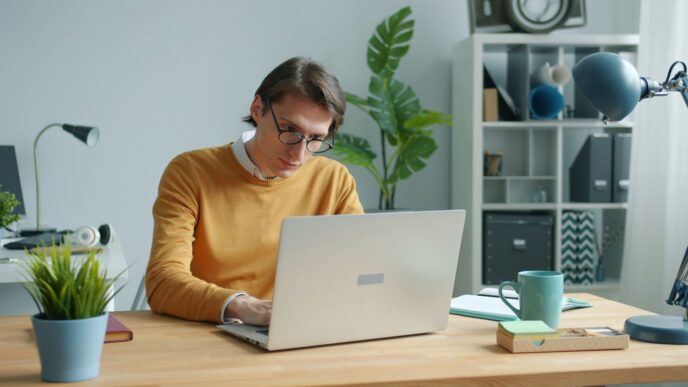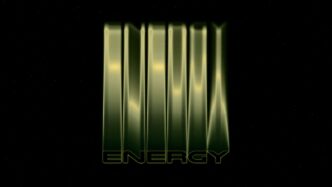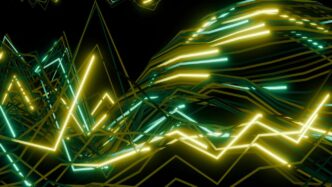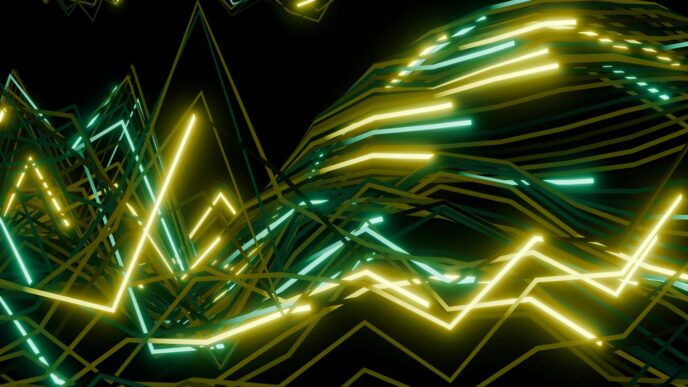AI is changing a lot of things, especially how we create digital stuff. While AI tools open up cool new possibilities, they also bring up tricky questions about rules and fairness. One big issue that keeps popping up is copyright problems with AI. If you’re a business owner, a tech person, or someone who makes content, you’re probably wondering what the legal side of using AI looks like. And you’re right to wonder. There are already a bunch of lawsuits about AI, so it’s good to know how AI is changing and what legal challenges come with it.
Key Takeaways
- AI systems like OpenAI’s models are facing lawsuits for using copyrighted material without permission to train their systems.
- A big question is whether AI-generated content can even be copyrighted, especially if there’s not enough human involvement.
- Companies like OpenAI are arguing that using copyrighted data for training their AI falls under “fair use” laws.
- Content creators and intellectual property owners need to keep an eye on how their work is used by AI and understand licensing agreements.
- The legal landscape around AI and copyright is still pretty new, and courts will likely give more guidance on how much human input is needed for AI-generated works to get copyright protection.
Understanding OpenAI Copyright Challenges
The Evolving Legal Landscape of AI
AI is changing so fast, and the law is trying to keep up. It’s a bit like watching a toddler try to catch a speeding train. Copyright law, in particular, is facing some serious questions about how it applies to AI-generated content and the data used to train these systems. We’re seeing new lawsuits and debates pop up all the time, and it’s hard to know exactly where things will land. The Copyright Act grants a limited monopoly in service of a broader goal to promote the Progress of Science and useful Arts. It will be interesting to see how the courts and the U.S. Copyright Office provide useful guidance as they explore the contours of this issue in the coming year.
Key Questions in OpenAI Copyright Litigation
There are a few big questions at the heart of the OpenAI copyright stuff. First, who actually owns the copyright to something created by AI? Is it the person who prompted the AI, the company that made the AI, or does it even qualify for copyright at all? Second, is it okay to use copyrighted material to train AI models? This is where the whole "fair use" thing comes in, and it’s a major point of contention. For example, OpenAI is appealing a court order in a copyright lawsuit filed by the New York Times. These actions include allegations that generative AI companies trained their generative AI tools on protected materials without proper attribution or compensation. These lawsuits underscore the importance of closely monitoring the composition of generative AI training data sets, scope and content of outputs, and license terms regulating the use of these rapidly evolving technologies.
Balancing Innovation and Copyright Protection
We want to encourage new tech, but we also need to protect the rights of creators. It’s a tricky balance. If copyright laws are too strict, it could stifle AI development. But if they’re too loose, it could mean that artists and writers lose control over their work and aren’t fairly compensated. Finding the right middle ground is essential for a healthy and innovative future. Technology and software license disputes involving intellectual property and contract rights carry significant risk in terms of potential business disruption and damages. OpenAI argues in its motion to dismiss that current judicial precedent supports the conclusion that it is not an infringement to create “wholesale cop[ies] of [a work] as a preliminary step” to develop a new, non-infringing product, even if the new product competes with the original.
Defining Authorship in the Age of AI
Human Creativity Versus Machine Generation
Okay, so who really gets the credit when an AI creates something? It’s a tricky question. We’re used to the idea that if you write a book or paint a picture, you’re the author, plain and simple. But what happens when an AI spits out a story or an image based on a prompt? Is it still authorship in the traditional sense? The core issue revolves around whether a machine can truly be considered an ‘author’ under existing copyright law. The U.S. Copyright Office has leaned towards requiring human input, but the exact amount is still fuzzy. It’s like, if you ask an AI to write a children’s story about a dragon who starts a podcast, and it generates a pretty good story, did you write it? You prompted it, sure, but the AI did the actual writing.
The ‘Guiding Human Hand’ Requirement
Courts have started to weigh in, emphasizing the need for a "guiding human hand" in the creative process. This idea comes from the existing copyright law, which protects "original works of authorship". The question becomes: how much of a guiding hand is needed? If you just type in a simple prompt, is that enough? Or do you need to heavily edit and refine the AI’s output to claim authorship? The Thaler v. Perlmutter case touched on this, with the court affirming that human authorship is essential for copyright. But it didn’t give us a clear line in the sand. It’s more of a spectrum, and we’re still figuring out where the threshold lies. It’s worth noting that technological tools have always been part of the creative process. Think about photographers using cameras, or graphic designers using software. The difference with generative AI is the level of autonomy the machine has.
Future Guidance from Courts and the U.S. Copyright Office
We’re definitely going to see more legal battles and rulings in the coming months and years. The courts and the U.S. Copyright Office are actively grappling with these issues, trying to adapt existing laws to this new reality. They’ll likely provide more specific guidance on what constitutes sufficient human input for copyright protection. This is super important for content creators, AI developers, and anyone using these tools. We need clarity to understand who owns what and how to protect intellectual property in the age of AI. Jeff Dean, Google’s chief scientist, anticipates a future dominated by “virtual engineers,” AI-driven agents capable of planning, coding, testing, and deploying software with minimal human oversight. It’s a brave new world, and the legal system is playing catch-up. Monitoring training data and outputs will be key.
Allegations Against OpenAI and Other AI Developers
Class Action Lawsuits and Prominent Plaintiffs
Last year saw a surge of class action lawsuits against big names like GitHub, Stability AI, OpenAI, and Meta. These lawsuits, some filed by well-known authors such as George R.R. Martin and Sarah Silverman, raise critical questions about using copyrighted material to train AI models without permission or compensation. The core issue revolves around whether AI developers are respecting copyright laws when building and using these powerful tools.
Unauthorized Use of Copyrighted Training Data
At the heart of these lawsuits is the claim that AI companies are training their models on copyrighted material without proper authorization. For example, one lawsuit alleges that GitHub, Microsoft, and OpenAI trained Codex and Copilot on publicly available code protected by open-source licenses, but the AI doesn’t give credit to the original authors when it generates similar code. This is seen as a potential violation of the Digital Millennium Copyright Act (DMCA). The plaintiffs argue that AI ethics should be considered.
Claims Regarding AI Output Infringement
It’s not just about the training data; the lawsuits also target the AI’s output. The argument is that the text generated by these AI models can also infringe on copyrights. The AI tools use copyrighted works in their training datasets, which are created by scraping the internet for text data. This process involves capturing, downloading, and copying copyrighted works. The lawsuits claim that the AI’s output, or the text-generated responses to user queries, can also constitute copyright infringement. The New York Times even sued OpenAI and Microsoft, claiming millions of its articles were used without permission to train AI chatbots.
OpenAI’s Defense: Fair Use and Innovation

The Scope of Copyright Limitations and Exceptions
OpenAI, facing a barrage of copyright claims, is leaning heavily on the doctrine of fair use. Basically, they argue that their use of copyrighted material to train AI models falls within the bounds of what’s legally permissible. The Copyright Act isn’t absolute; it has built-in limitations to promote innovation. Think of it like this: copyright is meant to encourage creativity, but not at the expense of stifling progress. OpenAI contends that their AI development is precisely the kind of progress the law should protect. They’re not just copying and redistributing copyrighted works; they’re using them to create something new and transformative.
Adapting Fair Use for Rapid Technological Change
The legal landscape is always playing catch-up with technology, and AI is no exception. OpenAI argues that the existing fair use framework needs to be adapted to account for the unique challenges and opportunities presented by AI. The core question is whether training an AI on copyrighted material without explicit permission constitutes fair use. It’s a tricky question, because the traditional fair use factors (purpose and character of the use, nature of the copyrighted work, amount and substantiality of the portion used, and effect on the market) don’t neatly apply to AI training. OpenAI is essentially saying that the scale and nature of AI training require a fresh look at how fair use is interpreted. For example, consider how AI enhances compliance in regulatory technology.
Precedent for Preliminary Copying in Development
OpenAI points to legal precedent that supports the idea that making copies of copyrighted material as a preliminary step in developing a new, non-infringing product can be considered fair use. They argue that the initial copying of copyrighted works to train their AI models is similar to reverse engineering software to achieve interoperability. In those cases, courts have often found that such preliminary copying is permissible, even if the final product competes with the original. OpenAI is arguing that their AI models are transformative because they create something new, and the initial copying is necessary to achieve that transformation. It’s like saying you can’t make an omelet without breaking a few eggs – in this case, the eggs are copyrighted works, and the omelet is a cutting-edge AI model. The lawsuits, including the one where Meta allegedly scraped copyrighted books, are really focusing on the training data. The key legal question is whether it’s fair use to train AI on copyrighted material without a license. AI tool providers often include warnings like “AI can make mistakes—verify the output”.
Impact on Content Creators and Intellectual Property Owners
Protecting Generative AI Innovations
Okay, so AI is making waves, right? But what does it all mean for the people who actually make stuff? It’s a bit of a mixed bag. On one hand, there’s the exciting possibility of using AI to create new things. Think of it as a super-powered tool that can help artists, writers, and musicians push their creative boundaries. The trick is figuring out how to protect these new AI-assisted creations. Are they eligible for copyright? And if so, who owns it? The human who prompted the AI? The company that developed the AI? It’s a legal puzzle, for sure. China, the USA, and the EU all have different ideas about AI-generated content, so it’s a bit of a mess.
Monitoring Training Data and Outputs
Then there’s the whole issue of training data. AI models need to learn from something, and that something is often vast amounts of copyrighted material scraped from the internet. Is that fair use? Maybe, maybe not. But content creators are understandably concerned about their work being used without permission or compensation. And it’s not just about the training data. It’s also about the outputs. If an AI generates something that’s too similar to an existing copyrighted work, that could lead to legal trouble. So, creators and IP owners need to be vigilant. They need to keep an eye on how their work is being used and be prepared to take action if necessary. It’s a pain, I know, but it’s the reality of the evolving legal landscape.
Navigating Licensing Terms for AI Tools
Finally, there’s the issue of licensing. As AI tools become more prevalent, content creators will need to understand the licensing terms associated with them. What are you allowed to do with the AI’s output? Can you use it for commercial purposes? Do you need to give credit to the AI developer? These are important questions to ask before you start using an AI tool. And honestly, the answers aren’t always clear. It’s a bit of a Wild West out there right now, with serious legal exposure for those who aren’t careful. So, do your research, read the fine print, and maybe even talk to a lawyer if you’re unsure about something. It’s better to be safe than sorry.
Legal Implications for AI Training Data
Scraping the Internet for Text Data
AI models get smart by learning from tons of data. A lot of this data comes from the internet. Think about it: websites, books, articles – it’s all out there. The process of gathering this data is often called "scraping." It’s like vacuuming up everything you can find. But, just because it’s on the internet doesn’t mean it’s free to use. AI-powered tools are becoming more common, but the data they use raises some serious questions.
Copyrighted Works in Large Datasets
The internet is full of stuff that’s protected by copyright. Music, writing, images – creators own these things. When AI developers scrape the web, they often end up using copyrighted material to train their models. This is where things get tricky. Is it okay to use copyrighted material if it’s just for training an AI? What if the AI then creates something that’s similar to the original work? These are the questions courts are grappling with right now. It’s a minefield of potential legal issues. Here are some things to consider:
- The amount of copyrighted material used.
- How the AI uses the material.
- Whether the AI’s output competes with the original work.
Digital Millennium Copyright Act Violations
The Digital Millennium Copyright Act (DMCA) is a U.S. law that deals with copyright issues in the digital world. One part of the DMCA makes it illegal to get around measures that protect copyrighted works. So, if an AI developer bypasses a paywall or some other protection to get training data, they could be violating the DMCA. It’s another layer of complexity in this whole AI copyright mess. Companies should closely monitor, catalog, and assess training data used by AI tools. It’s a good idea to consult a legal pro if you’re building an AI-driven business.
The Role of Human Input in AI Copyright
Copyright Protection for AI-Generated Content
So, can you actually copyright something an AI makes? It’s a tricky question. The general consensus seems to be that AI-generated content, without significant human input, doesn’t qualify for copyright protection. Think of it like this: if the AI is doing all the work, there’s no ‘author’ in the traditional, human sense. This is a big deal because it affects who owns the rights to, say, a song or an image created using AI. If there’s no copyright, anyone can use it.
The Extent of Human Decision-Making Required
Okay, but what is significant human input? That’s the million-dollar question, and honestly, nobody really knows for sure yet. It’s not just about typing in a prompt and letting the AI run wild. It’s more about actively shaping the output. Think of it as using AI as a tool, like a fancy brush, rather than a standalone artist. The more you guide the AI, the more likely you are to have a valid copyright claim. Courts are still figuring out the specifics, but the key seems to be demonstrating that your creative choices are what truly shaped the final product. For example, iterative prompting, editing, and refining the output can be considered sufficient creative input. Businesses should ensure clear documentation of human involvement in AI-assisted development to protect their interests. This is where AI ethics comes into play.
Technological Tools in the Creative Process
We’ve always used tools in the creative process, right? A painter uses brushes, a musician uses instruments. AI is just another tool, albeit a very powerful one. The difference is that AI can sometimes feel like it’s doing more than just assisting; it can feel like it’s creating. But at the end of the day, it’s still a tool. It’s up to us, the humans, to use it in a way that reflects our own creativity and vision. The U.S. Copyright Office emphasizes the distinction between AI-assisted works and content that is generated entirely by AI. The question is how much human input is necessary to qualify the user of an AI system as an “author” of the generated work.
Wrapping Things Up
So, what’s the takeaway from all this? Well, the world of AI and copyright is still pretty new, and things are changing fast. Companies making AI tools need to be super careful about how they get their training data. And if you’re a creator, you really need to keep an eye on how your stuff is being used. It’s a bit of a wild west out there right now, with lots of lawsuits popping up. Everyone, from the big tech companies to individual artists, has a part to play in figuring out how we move forward. It’s all about finding a good balance between letting technology grow and making sure creators get what they deserve.
Frequently Asked Questions
Can AI-generated content be copyrighted?
The U.S. Copyright Office says that for something to be copyrighted, a human must have created it. This means AI-generated content might not get copyright protection unless a person was heavily involved in making it. Courts and the Copyright Office will give more guidance on how much human effort is needed for AI-assisted works to be protected.
Who is suing AI companies like OpenAI, and what are their complaints?
Many lawsuits have been filed against AI companies like OpenAI, Stability AI, and Meta. Famous authors like George R.R. Martin and Sarah Silverman are among those suing. They claim these AI companies used their copyrighted books and other works without permission or payment to train their AI models. They also say that the AI’s outputs sometimes copy their work.
What is OpenAI’s main defense against copyright infringement claims?
AI companies like OpenAI argue that their use of copyrighted material for training is
What is OpenAI’s main defense against copyright infringement claims?
AI companies say that using copyrighted material to train their models falls under
What is OpenAI’s main defense against copyright infringement claims?
AI companies like OpenAI say that using copyrighted material to train their models is allowed under
What is OpenAI’s main defense against copyright infringement claims?
AI companies like OpenAI argue that their use of copyrighted material for training is allowed under

